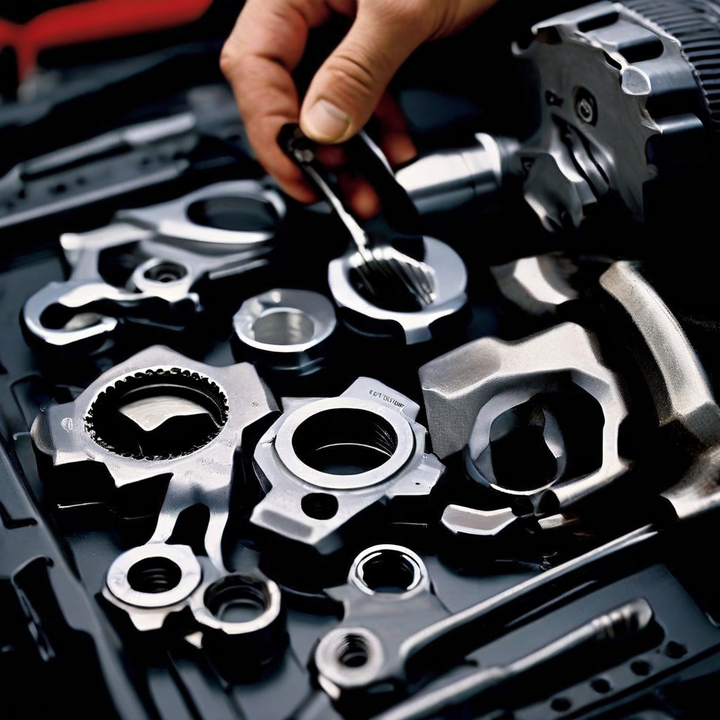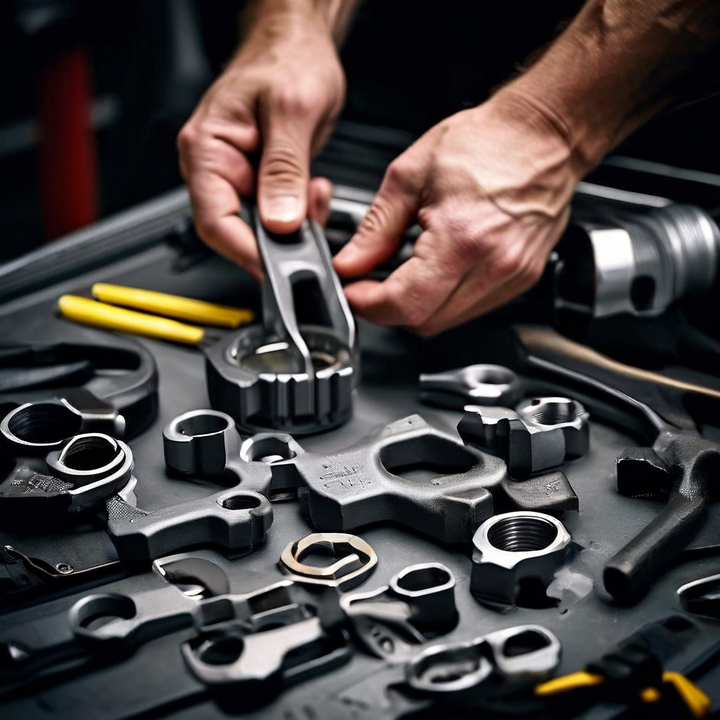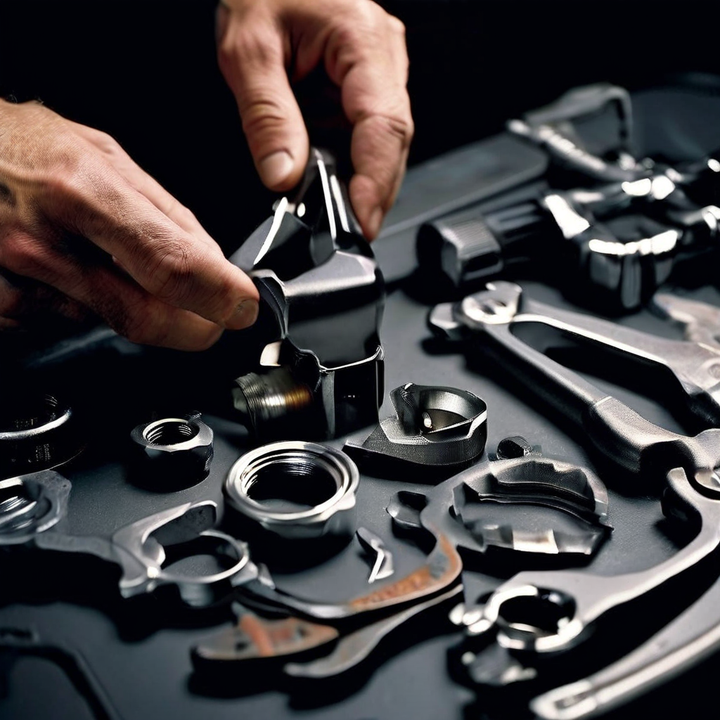


Maintaining your vehicle's engine is crucial for ensuring its longevity and optimal performance. One of the most essential maintenance tasks is regularly changing the oil filter, which traps contaminants and prevents them from circulating through the engine. However, removing and installing a new oil filter can be challenging without the proper tool – an oil filter wrench. This comprehensive guide will provide you with a detailed understanding of oil filter wrenches, their types, and step-by-step instructions for using them effectively. Additionally, we'll cover maintenance tips, troubleshooting techniques, and the importance of regular oil changes for your vehicle's well-being.

An oil filter wrench is a specialized tool designed specifically for removing and installing spin-on type oil filters. These filters are cylindrical in shape and screw onto a threaded mount on the engine block. Without the appropriate wrench, attempting to remove a tightly fitted or stuck oil filter can be frustrating and potentially damaging to the engine components.
An oil filter wrench is a tool designed to remove and install spin-on type oil filters. These filters are typically cylindrical in shape and screw onto a threaded mount on the engine block. Without the proper wrench, removing a tightly fitted or stuck oil filter can be a frustrating and potentially damaging experience.
There are several types of oil filter wrenches available, each with its own unique design and advantages. Understanding the different options will help you choose the most suitable wrench for your vehicle and the specific filter location.
| Wrench Type | Description |
|---|---|
| Strap Wrench | Features an adjustable metal strap that wraps around the filter's body, providing a secure grip. Versatile and can accommodate various filter sizes. |
| Chain Wrench | Uses a sturdy metal chain to wrap around the filter. Offers excellent grip, making it ideal for stubborn or stuck filters. |
| Cup Wrench | Has a socket-like design that fits snugly over the top of the filter. Often vehicle-specific and provides a secure fit for easy removal and installation. |
| Claw Wrench | Features adjustable claws or jaws that grip the filter's body from multiple points. Useful for accessing filters in tight spaces. |
| Pliers-Style Wrench | Resembles large pliers with adjustable jaws that grip the filter's body. Offers excellent leverage and is suitable for various filter sizes. |
The type of oil filter wrench you choose will depend on factors such as the size and location of your vehicle's filter, as well as the available space around it. It's always best to consult your owner's manual or an automotive professional for guidance on selecting the most appropriate wrench for your specific vehicle.
Before you begin the process of changing your vehicle's oil filter, it's essential to gather the necessary tools and supplies, locate the filter, and properly drain the engine oil.
To ensure a smooth and efficient oil filter change, you'll need to have the following tools and supplies on hand:
Oil filter wrench compatible with your vehicle's filter size and location
Drain pan to catch the used oil
Rags or paper towels for cleanup
Fresh engine oil of the recommended type and quantity
The location of the oil filter can vary depending on the vehicle make, model, and engine type. Consult your vehicle's owner's manual or an automotive repair guide to accurately identify the filter's position.
Before removing the old oil filter, you must first drain the engine oil by unscrewing the drain plug located at the bottom of the oil pan. This step is essential to prevent spills and ensure a clean workspace.
Once you've prepared the work area and gathered the necessary tools, you're ready to begin the process of removing the old oil filter and installing a new one using the oil filter wrench.
Position the oil filter wrench around the filter, ensuring a secure grip. Proper positioning is crucial for effective removal and installation.
To loosen the old filter, turn the wrench counterclockwise while applying firm pressure. Avoid excessive force that could damage the filter or the engine components.
Once the filter is loose, unscrew it by hand and carefully remove it, allowing any remaining oil to drain into the pan.
Before installing the new filter, apply a thin coat of fresh oil to the gasket to ensure a proper seal.
Screw on the new filter by hand until it makes contact with the mounting surface, followed by an additional half to three-quarters turn.
Consult your vehicle's owner's manual for the recommended oil type and quantity, and refill the engine through the designated fill port.
After refilling the oil, start the engine and check for any oil leaks around the new filter. If a leak is detected, tighten the filter slightly more.

Proper maintenance and care of your oil filter wrench will ensure its longevity and optimal performance, allowing you to tackle future oil changes with ease.
Inspect the wrench regularly for signs of wear, such as cracks, dents, or damaged threads.
Clean the wrench after each use to remove any oil or debris.
Store the wrench in a dry, clean place, away from moisture and extreme temperatures. Proper storage will help prevent corrosion and premature wear.
If the wrench shows significant wear or damage, replace it. A compromised wrench can slip or fail during use, potentially causing injury or damage.
Even with the right tool and proper technique, you may encounter challenges when removing a stuck or stubborn oil filter. Here are some troubleshooting tips to help you overcome these obstacles.
Apply penetrating oil or lubricant around the filter's gasket to help break the seal. This can loosen a stubborn filter and make removal easier.
If the filter remains stuck, consider using specialized tools like a filter chain or pliers-style wrench designed for stubborn filters. These tools offer increased grip and leverage, improving your chances of successful removal.
In extreme cases where the filter is severely stuck, seeking professional assistance may be necessary to avoid damaging the engine components.
Investing in the appropriate oil filter wrench for your vehicle offers several benefits that can make the oil change process smoother and safer.
| Benefit | Description |
|---|---|
| Preventing Damage to Engine Components | Using the right oil filter wrench prevents damage to engine components. Improper tools or techniques can strip threads, crack filters, or cause leaks, leading to costly repairs. |
| Ensuring a Secure Grip and Leverage | Oil filter wrenches are designed to provide a secure grip and leverage, allowing for efficient removal and installation. This reduces the risk of slippage or over-tightening, which can cause damage. |
| Facilitating Smooth and Efficient Oil Changes | With the right wrench, oil changes become a smooth and efficient process. You'll save time and effort, while ensuring the job is done correctly, protecting your engine's health. |
Regular oil changes are essential for maintaining your vehicle's engine health and prolonging its lifespan.
Engine oil lubricates moving parts, reducing friction and wear. Regular oil changes remove contaminants and replenish the oil, maintaining optimal engine performance.
Neglecting oil changes can lead to increased wear and tear, potentially causing premature engine failure. Regular maintenance extends the engine's lifespan, saving you from costly repairs or replacements.
Fresh, clean oil improves engine efficiency, resulting in better fuel economy and overall vehicle performance. Regular oil changes ensure your vehicle operates at its best, providing a smoother and more enjoyable driving experience.
When changing your vehicle's oil filter, it's essential to dispose of the used oil and filter responsibly to minimize environmental impact.
Improperly disposed of oil and filters can contaminate soil and water sources, causing harm to ecosystems and wildlife. Responsible disposal is crucial for protecting the environment.
Many auto parts stores and service centers offer recycling programs for used oil and filters. Recycling reduces waste and allows these materials to be repurposed.
Check with your local authorities for specific regulations and guidelines regarding the disposal of used oil and filters. Following these guidelines ensures compliance and helps protect your community.
Changing your vehicle's oil filter is a crucial maintenance task that should be performed regularly. By understanding the different types of oil filter wrenches, following the proper steps, and maintaining your tools, you can ensure a smooth and successful oil change experience. Remember, regular oil and filter changes are essential for maintaining your engine's health and prolonging its lifespan, ultimately saving you from costly repairs and ensuring optimal vehicle performance.
An oil filter wrench is a specialized tool designed to securely grip and remove oil filters that are tightly fitted or stuck. It provides the necessary leverage to loosen and install new filters without damaging engine components.
You should replace your engine air filter annually or every 12,000 miles, depending on the driving conditions. Regularly inspecting and changing a clogged air filter ensures proper airflow to the engine.
Signs of a failing oxygen sensor include reduced fuel efficiency, engine misfiring, and the check engine light illuminating. A faulty oxygen sensor can lead to incomplete combustion and increased emissions.
Excessive idling can cause carbon buildup, increased wear on engine components, and reduced fuel efficiency. It's best to avoid prolonged idling to maintain optimal engine performance.
Engine coolant, also known as antifreeze, regulates the engine's temperature by absorbing and dissipating heat. It prevents the engine from overheating and ensures proper operating temperatures.
To extend the life of your spark plugs, follow the recommended replacement intervals, use the correct spark plug type for your vehicle, and avoid engine overheating or excessive idling.
Synthetic engine oils offer better lubrication, improved fuel efficiency, and increased protection against engine wear and tear compared to conventional oils. They also have longer service intervals.
Proper disposal of used oil and filters is crucial to prevent environmental contamination. Improperly disposed oil and filters can pollute soil and water sources, causing harm to ecosystems and wildlife.
Signs of a failing water pump include coolant leaks, overheating engine, and a whining or grinding noise coming from the pump. Addressing a failing water pump promptly is essential to avoid engine damage.
To prevent engine sludge buildup, follow the recommended oil change intervals, use high-quality engine oils, and avoid excessive idling or short trips that prevent the engine from reaching optimal operating temperatures.

Sarah isn't your average gearhead. With a double major in Mechanical Engineering and Automotive Technology, she dived straight into the world of car repair. After 15 years of turning wrenches at dealerships and independent shops, Sarah joined MICDOT to share her expertise and passion for making cars run like new. Her in-depth knowledge and knack for explaining complex issues in simple terms make her a valuable asset to our team.






